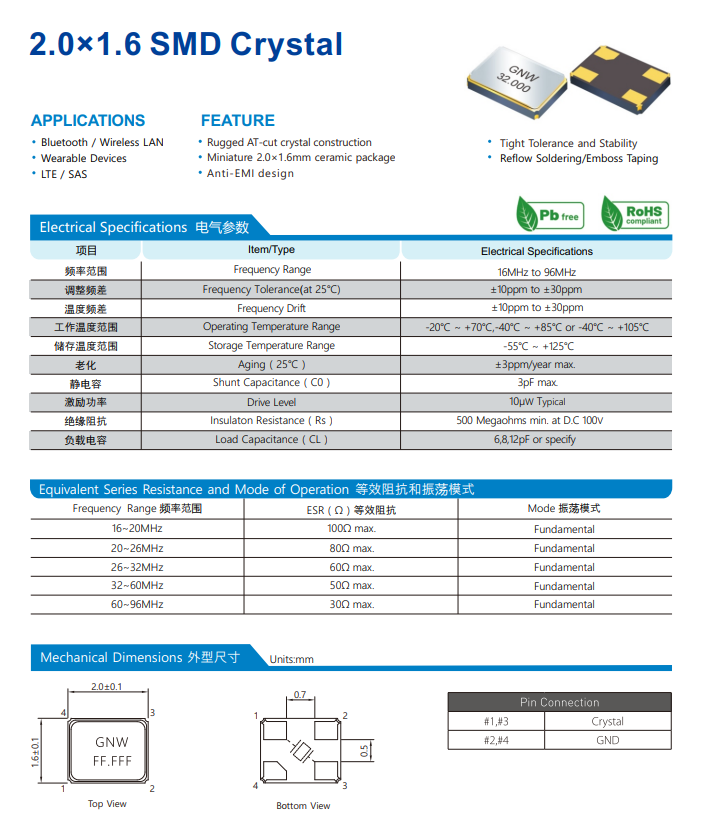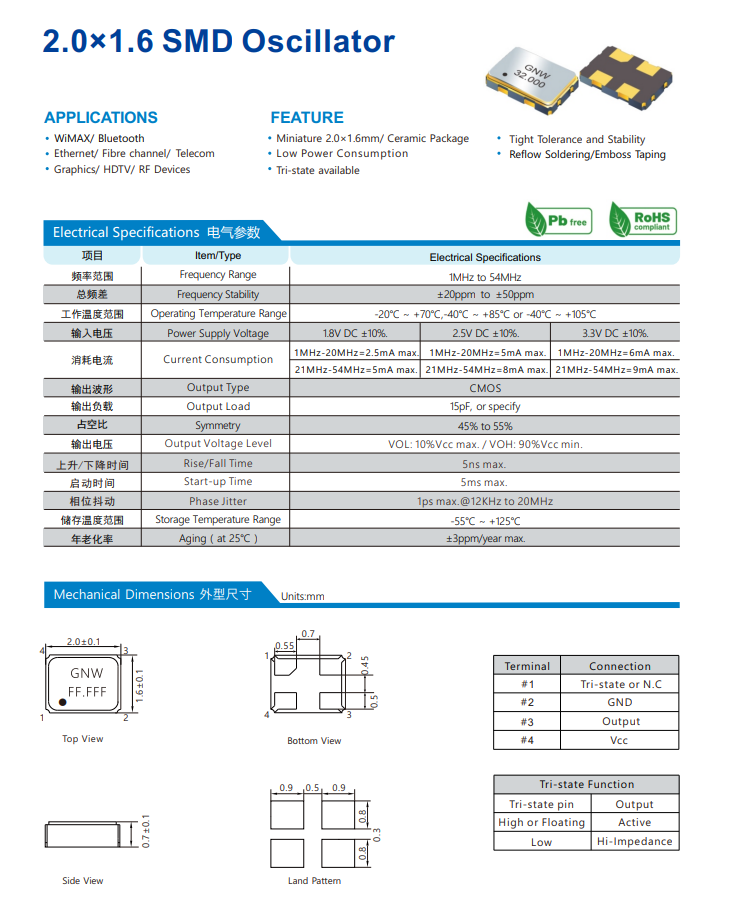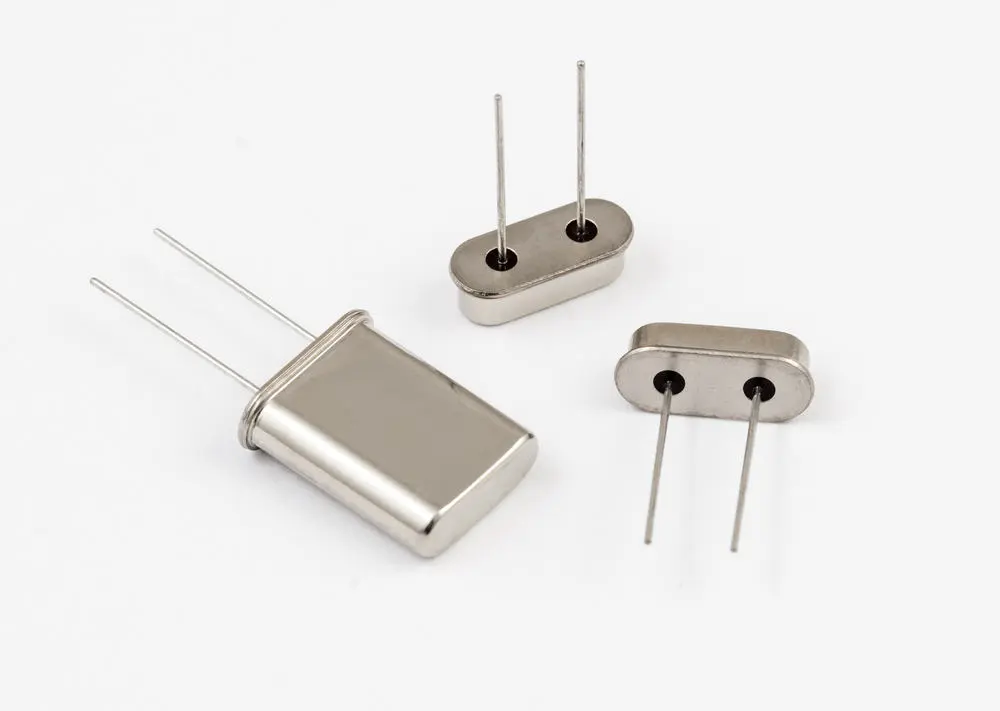
Crystal Oscillator Frequency Ranges and Applications
Key Takeaways
1.Crystal oscillators are available in a wide frequency range, from as low as 0.0320 MHz to over 1075 MHz, catering to diverse applications like timekeeping, communication, and advanced electronic systems.
2.The resonant frequency of crystal oscillators is highly stable, attributed to physical dimensions of the crystal. Special types like TCXOs and OCXOs offer enhanced stability across temperature variations.
3.Crystal oscillator datasheets often indicate a range like “10-50 MHz,” signifying the variety of distinct frequencies available within a product family. Each crystal also comes with a specified frequency tolerance, indicating the performance range of each unit.
The concept of crystal oscillator frequency range can encompass several aspects. Firstly, manufacturers produce crystal oscillators within specific frequency ranges, offering a variety of similar functioning crystals each with a different nominal frequency. Secondly, the collective frequency range of all manufactured crystal oscillators spans an extensive spectrum, starting as low as 0.0320 MHz and reaching upwards of 1075 MHz and beyond. Read on as we’ll be discussing crystal oscillator frequency ranges.

Common Applications Within the Crystal Oscillator Frequency Range
| Frequency Range | Specific Frequencies | Common Applications |
| Low (32 kHz to 1 MHz) | 32.768 kHz | Quartz wristwatches, Real-time clock modules |
| 100 kHz to 1 MHz | RFID systems, Consumer electronics | |
| Intermediate (1 to 10 MHz) | 4 to 8 MHz | Microcontrollers, TV remote controls |
| 10 MHz | Digital circuits, Communication devices | |
| High (10 to 100 MHz) | 20 to 40 MHz | Microprocessors, Wireless devices |
| 100 MHz | Fast digital circuits, High-speed ADCs | |
| Very High (Above 100 MHz) | 125 to 200 MHz | Advanced communication systems, Ethernet |
| Above 200 MHz | Radar systems, Satellite communication |
Discussion of Crystal Oscillator Frequency
A crystal oscillator’s nominal frequency is its designed resonating frequency —the frequency it’s intended to operate at. For example, an oscillator marked for 10 MHz operates at this nominal frequency. However, oscillators in practical scenarios exhibit some frequency deviations. These deviations are measured by the frequency stability, typically noted in the product’s datasheet.

The resonant frequency of a crystal oscillator is remarkably stable, largely due to its dependence on the crystal’s physical dimensions. This stability, typically measured in parts per million (ppm), far surpasses the less stable resonant frequencies of RC or LC oscillators. Standard resonant frequencies for crystals are available across a wide spectrum, catering to various application requirements we discuss below.
Factors Affecting Crystal Oscillator Frequencies
The frequency of a crystal can vary with its temperature, as the crystal’s size is dependent on temperature. To mitigate this, temperature-compensated crystal oscillators (TCXOs) and oven-controlled crystal oscillators (OCXOs) are used in applications requiring high-frequency stability across a range of temperatures. Nonetheless, in crystals that are oriented in specific ways, known as cuts, these variations can be minimized so that they are virtually insignificant for most applications, except those that require extremely precise measurements.
By employing frequency dividers, frequency multipliers, and phase-locked loop circuits, it becomes feasible to generate a broad spectrum of frequencies from a single reference frequency.
Frequency Range vs. Tolerance
Examining a datasheet of a crystal oscillator may show the crystal oscillator frequency range as “10-50 MHz.” It is important to note that this doesn’t indicate the frequency range of a single crystal product but rather the production of various crystals within the family, each with distinct frequencies in the spectrum. So, a crystal operating at 20 MHz is an entirely separate product from one operating at 25 MHz.
Additionally, these crystals come with a specified frequency tolerance, denoting the performance range of each unit. Therefore, purchasing multiple 25 MHz crystals with a tolerance of 20 ppm guarantees that their frequencies will lie between 24.9995 MHz and 25.0005 MHz.
Crystal Oscillator Frequency Trends
Lower-frequency crystals are commonly used in applications, including real-time clocks, quartz watches, and various clock devices. On the other hand, higher frequency crystals are predominantly used for electronic communication, such as cellular devices, remote controls, GPS systems, radios, and modems. There are, of course, exceptions where some high-frequency crystals are also utilized in clock mechanisms, while low-frequency crystals find their use in electronic communication technologies.

(Crystal: 49U and 49S)
In certain specialized uses, crystal oscillators are tailored for specific frequencies. For instance, a 4.194304 MHz oscillator is perfect for timers because dividing this frequency by 222 yields a precise 1 Hz signal, thanks to a 22-stage binary divider. Below, we’ve summarized a variety of trends within the vast crystal oscillator frequency range.
Crystal Oscillator Frequency Trends
| Application Category | Frequencies | Purpose/Significance |
| Timekeeping and Real-time Clock (RTC) | 0.032768 MHz, 0.065536 MHz | Used for real-time clocks and quartz watches, typically in lower frequency ranges. |
| Data Communication and UART | 1.8432 MHz, 3.6864 MHz | Used in UART applications for serial communication, facilitating standard baud rates. |
| Audio/Video (A/V) | 2.8224 MHz, 3.579545 MHz | Employed in CD-DA systems and NTSC color subcarriers, aligning with specific signal frequencies. |
| Radio and Intermediate Frequency (IF) Filters | 4.5 MHz, 10.7 MHz | Common in radio applications, such as IF filters in FM broadcasting. |
| Binary Division | Variable | Frequencies allowing binary division to 1 Hz or 32.768 kHz, crucial for digital systems and microcontrollers. |




